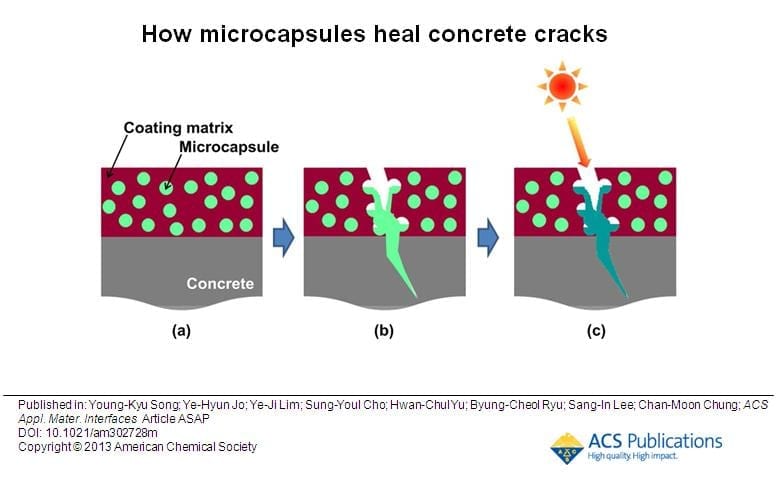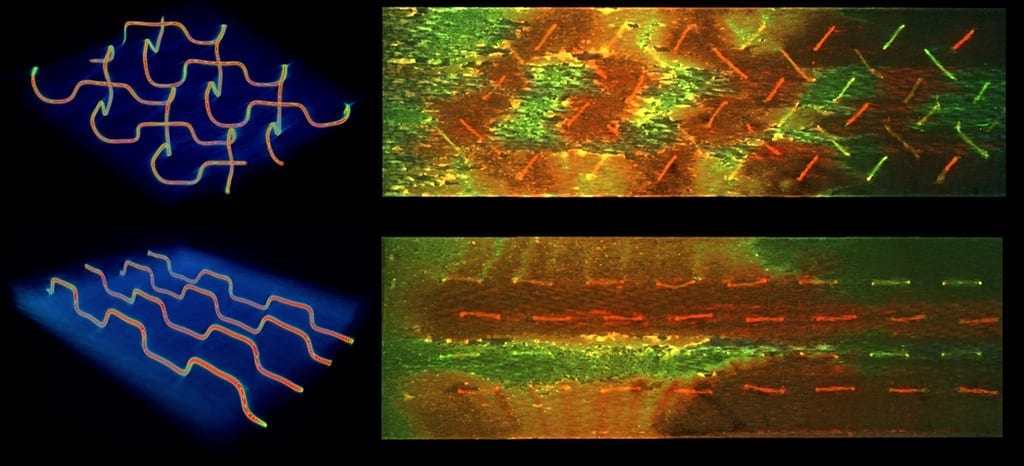
ECC could be a new generation material solution to many mechanical and durability property challenges, substantially contributing to prolonged infrastructure functionalization.
In the human body, small wounds are easily treated by the body itself, requiring no further care. For bigger wounds to be healed, the body may need outside assistance. Concrete is like a living body, in that it can self-heal its own small wounds (cracks) as an intrinsic characteristic. However, cracks do not heal easily in conventional concrete due to its rather brittle nature, which calls into question the effectiveness of self-healing in conventional concrete materials with no control over crack formation.
Robust self-healing composites called engineered cementitious composites (ECC) are based on an advanced material technology first proposed by Dr. Victor C. Li from University of Michigan, Ann Arbor. Unlike the conventional concrete materials preferred in most field practices, ECC, which has reinforcing microfibers smaller than human hair, is relatively ductile in tension. Ductility is a direct result of strain-hardening response due to the formation of multiple closely spaced microcracks with average widths of less than 100 micrometers. Even under excessive loading conditions, crack widths remain constant.
“Having cracks with widths at micrometer levels allows us to add special attributes such as self-healing to ECC material,” says Mustafa Sahmaran, Professor of Civil Engineering and Director of Advanced Infrastructure Materials Research Laboratory at Gazi University, Ankara, Turkey. “Despite the number of studies on self-healing materials development, recent popularity of the technology escalated very suddenly due to the repetitive repair and/or maintenance needs of deteriorating infrastructures. The process of self-healing in ECC materials is quite straightforward. Cracks heal themselves with the help of two main mechanisms: ongoing hydration reactions of anhydrous cementitious materials resulting in further calcium-silicate-hydrate gels and calcium carbonate precipitation. What is needed for these two reactions to take place is abundantly available for structures located anywhere in the world: water and air. Despite the effectiveness of self-healing in ECCs with micron-size cracks, some critics question the “robustness” of the mechanism. One such robustness criterion is the “repeatability,” or multiple reoccurrence of crack closure. The other criterion is the “pervasiveness,” meaning that the mechanism should take place all over the structural element rather than being restricted to certain areas.”
Read more: Concrete cracks heal themselves
The Latest on: Self-healing concrete
[google_news title=”” keyword=”Self-healing concrete” num_posts=”10″ blurb_length=”0″ show_thumb=”left”]
via Google News
The Latest on: Self-healing concrete
- Thin, bacteria-coated fibers could lead to self-healing concrete that fills in its own crackson March 22, 2024 at 5:57 am
What if concrete had the same kind of self-healing ability as human tissue? Our team at the Advanced Infrastructure Materials lab at Drexel University was inspired by self-healing tissue in the ...
- Thin, bacteria-coated fibers could lead to self-healing concrete that fills in its own crackson March 21, 2024 at 5:00 pm
What if concrete had the same kind of self-healing ability as human tissue? BioFiber has three essential functions: It heals itself on its own, it stops cracks from growing wider, and it remains ...
- Self-Healing Concrete: What Ancient Roman Concrete Can Teach Uson April 3, 2023 at 12:08 am
Could so-called ‘hot mixing’, with pockets of reactive lime clasts inside the cured concrete provide self-healing properties? At its core, this is the recipe which any hydraulic cement uses ...
via Bing News










